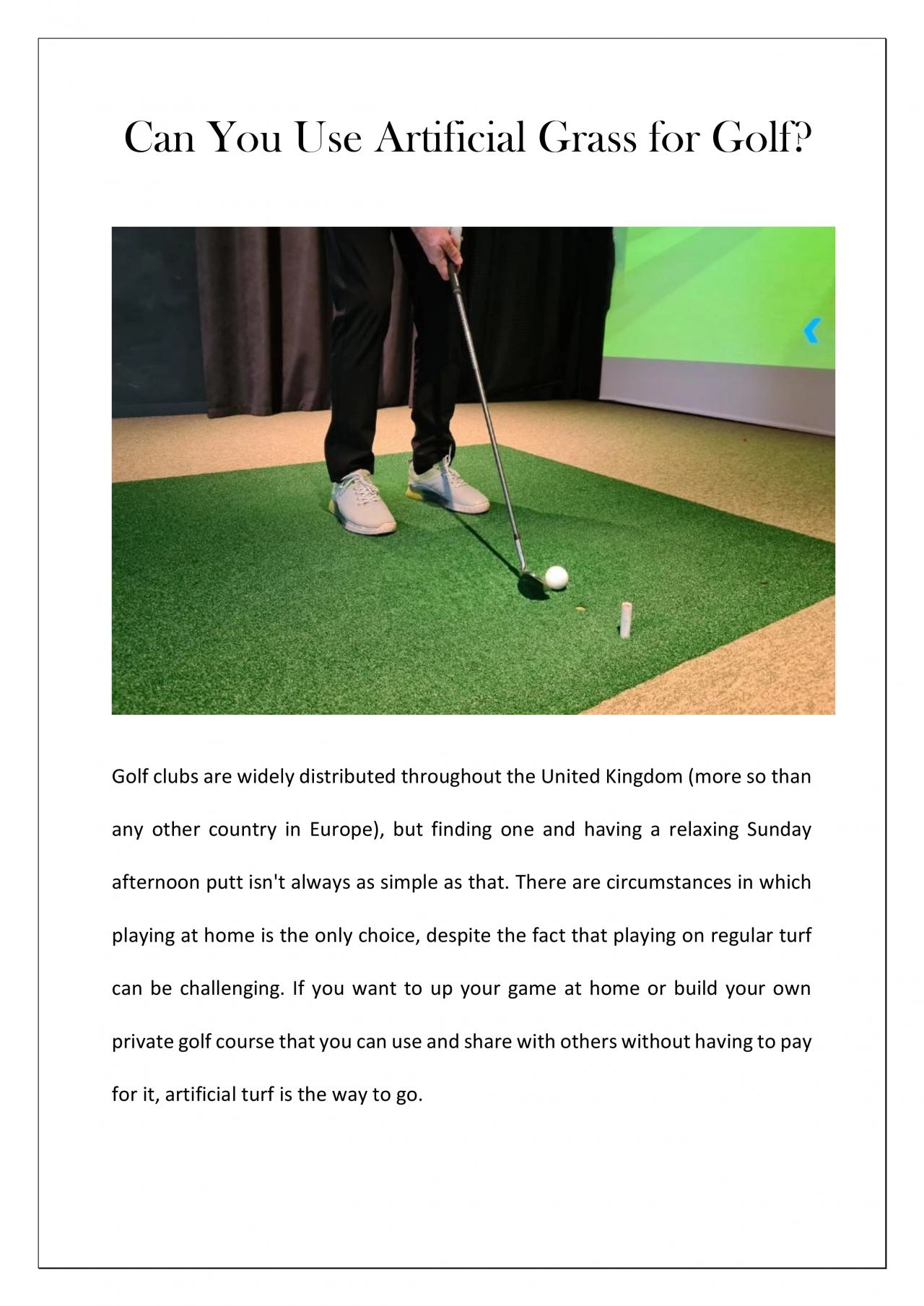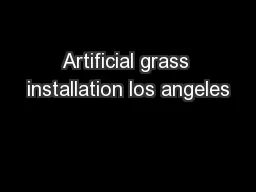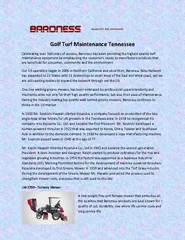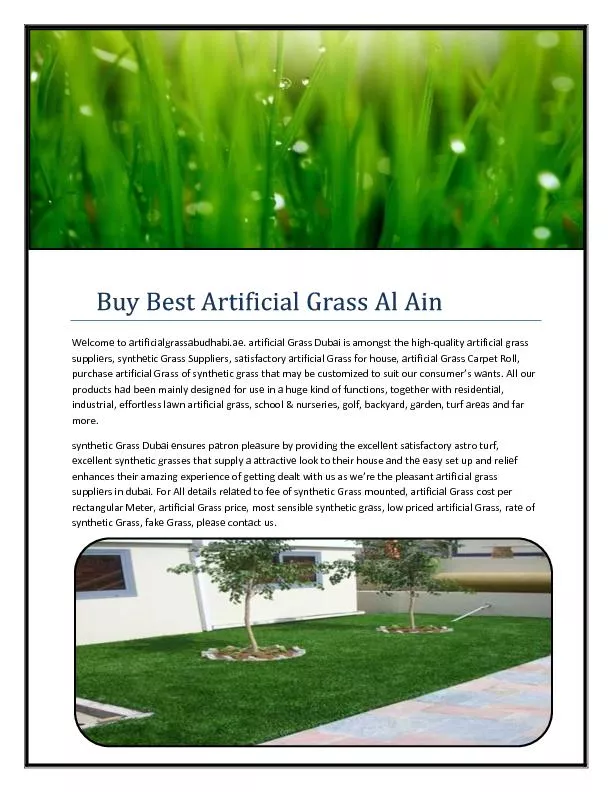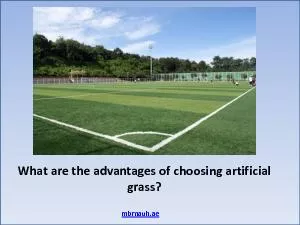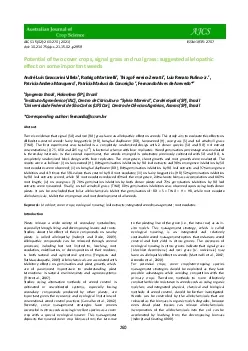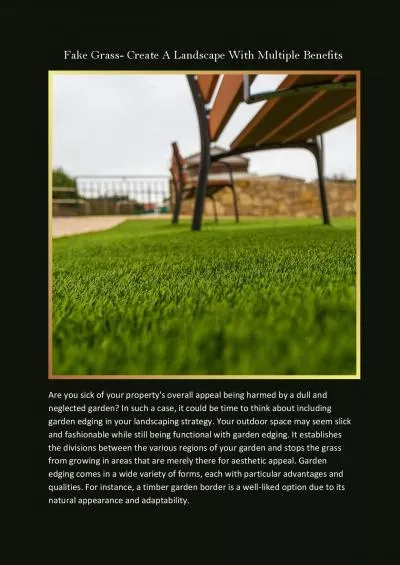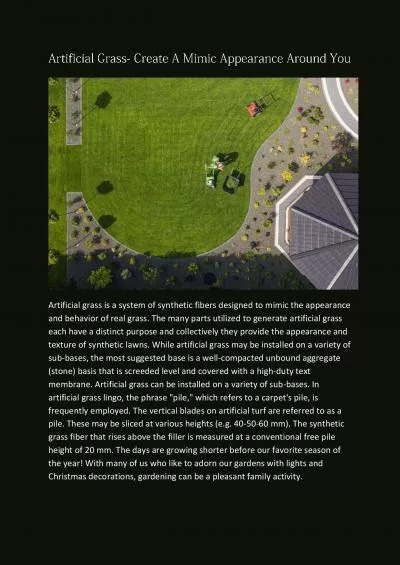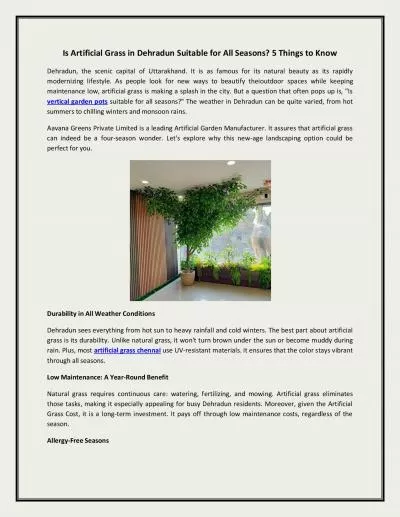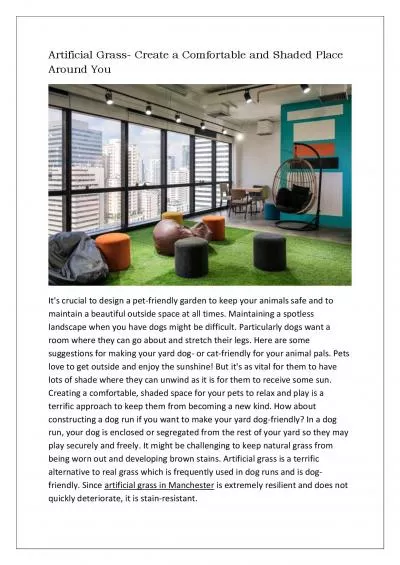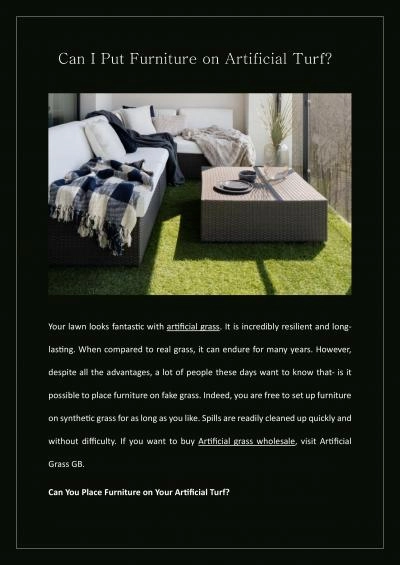PDF-Can You Use Artificial Grass for Golf?
Author : Mattcook | Published Date : 2024-05-14
Golf clubs are widely distributed throughout the United Kingdom more so than any other country in Europe but finding one and having a relaxing Sunday afternoon putt
Presentation Embed Code
Download Presentation
Download Presentation The PPT/PDF document "Can You Use Artificial Grass for Golf?" is the property of its rightful owner. Permission is granted to download and print the materials on this website for personal, non-commercial use only, and to display it on your personal computer provided you do not modify the materials and that you retain all copyright notices contained in the materials. By downloading content from our website, you accept the terms of this agreement.
Can You Use Artificial Grass for Golf?: Transcript
Download Rules Of Document
"Can You Use Artificial Grass for Golf?"The content belongs to its owner. You may download and print it for personal use, without modification, and keep all copyright notices. By downloading, you agree to these terms.
Related Documents

